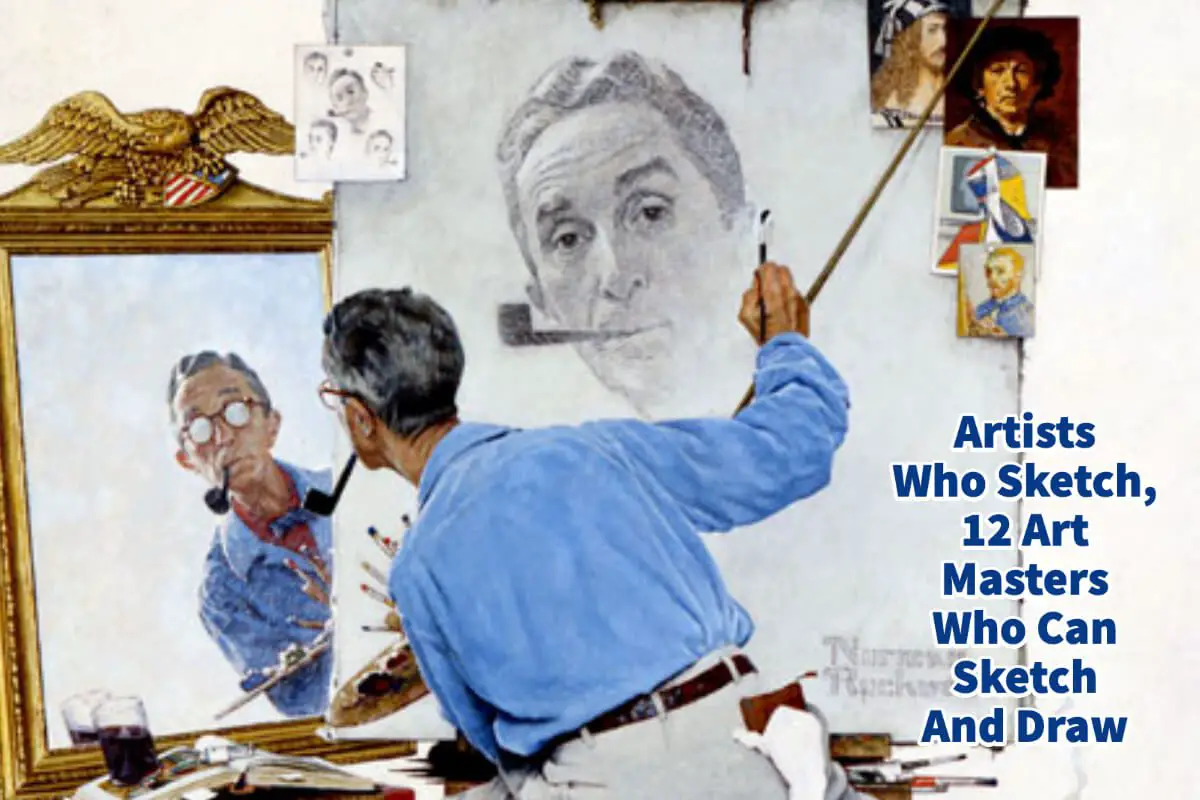Art is a language of expression, storytelling, and capturing life’s nuances. In this realm of creativity, sketching is indispensable, forming the bedrock on which artists build their masterpieces.
Sketching is the process of raw creation, an intimate dialogue between the artist and the canvas, where thoughts and visions take form through lines and shades. It allows artists to study, understand, and dissect their subjects, laying the groundwork for what eventually transforms into a work of art. Read on as we delve into the world of twelve artists who have honed the skill of sketching, an essential aspect of their artistry.
Table of Contents
- Our Top 12 Artists Who Can Sketch And Draw
- 1. Leonardo da Vinci (1452 – 1519)
- 2. Albrecht Durer (1471 – 1528)
- 3. Michelangelo (1475 – 1564)
- 4. Rembrandt (1606 – 1669)
- 5. Peter Paul Rubens (1577 – 1640)
- 6. Jean-Auguste-Dominique Ingres (1780 – 1867)
- 7. Edgar Degas (1834 – 1917)
- 8. Vincent Van Gogh (1853 – 1890)
- 9. Gustav Klimt (1862 – 1918)
- 10. Henri De Toulouse-Lautrec (1864 – 1901)
- 11. Pablo Picasso (1881 – 1973)
- 12. Norman Rockwell (1894 – 1978)
- Why Sketching Is Essential For All Artists
- Watch Our Short Stories About 12 Art Masters Who Can Sketch And Draw Below!
- Frequently Asked Questions
- Related Questions
Our Top 12 Artists Who Can Sketch And Draw
The beauty of sketching lies in the raw, unadulterated connection between the artist’s vision and the canvas, and as an intimate exploration of one’s surroundings, emotions, and ideas, sketching forms the foundation of an artist’s skill set.
Here, we delve into the lives and works of 12 masters who shaped the world of sketch artistry.
1. Leonardo da Vinci (1452 – 1519)
Leonardo Da Vinci, the quintessential Renaissance man, is best known for masterpieces like the Mona Lisa and The Last Supper. Yet, his sketches reveal his insatiable curiosity and genius.

“The Vitruvian Man” is perhaps his most influential sketch, embodying the blend of art and science, epitomizing the principles of proportion and symmetry.

2. Albrecht Durer (1471 – 1528)
Durer was a German painter, printmaker, and theorist of the German Renaissance. His sketches revealed an incredible eye for detail.
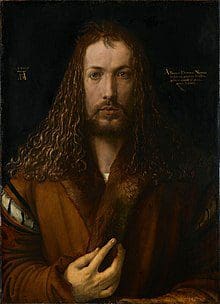
His most notable sketch, “Praying Hands,” a study of an apostle’s hands in the Heller altarpiece, has transcended its original context, representing faith and hope universally.
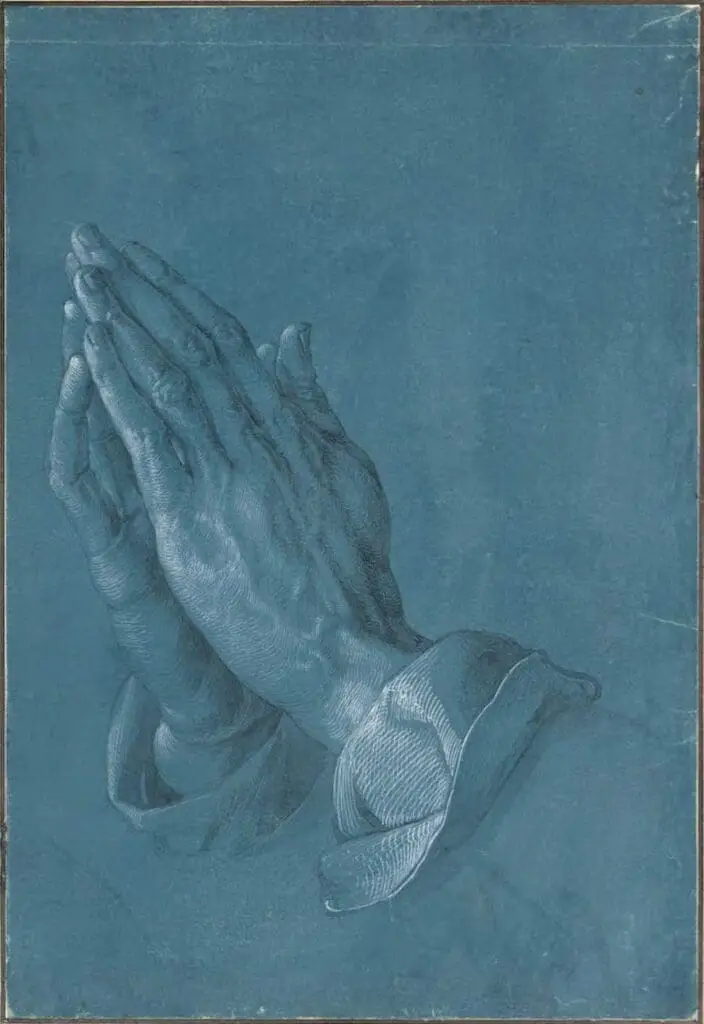
3. Michelangelo (1475 – 1564)
Best known for his monumental works like the Sistine Chapel’s ceiling, Michelangelo’s sketches offer insight into his creative process.

His sketch “Studies for the Libyan Sibyl” shows his mastery of the human form and is a fine example of how a preparatory sketch can translate into a grand fresco.
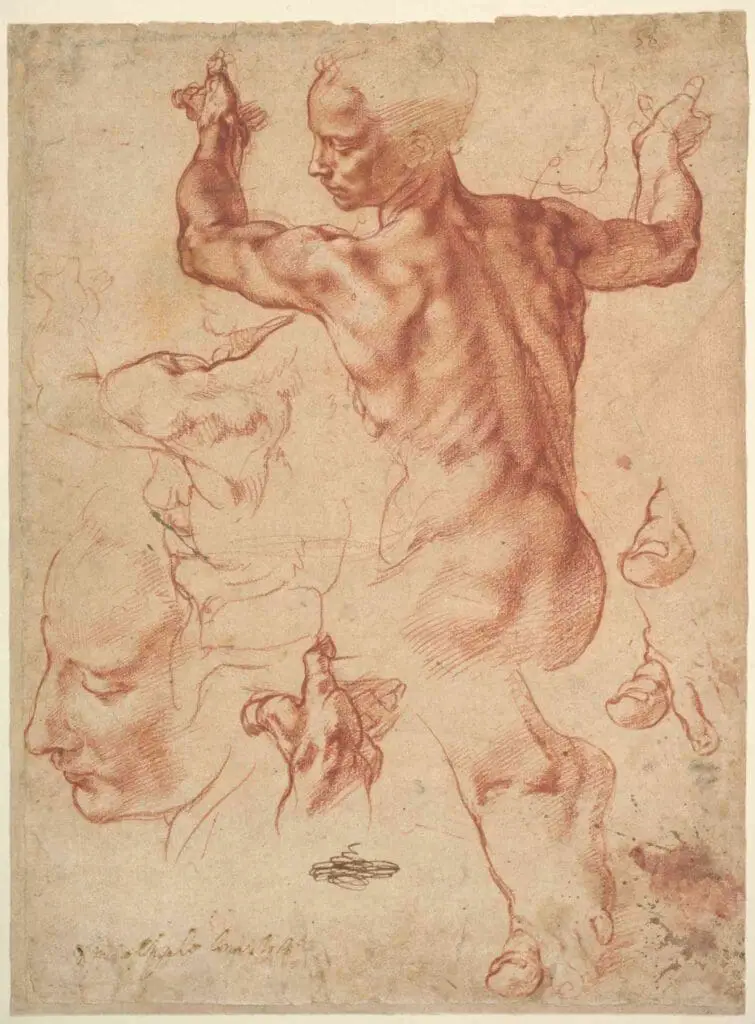
4. Rembrandt (1606 – 1669)
Rembrandt, the Dutch master, was renowned for his etching technique. However, his sketches show a unique ability to capture fleeting moments.
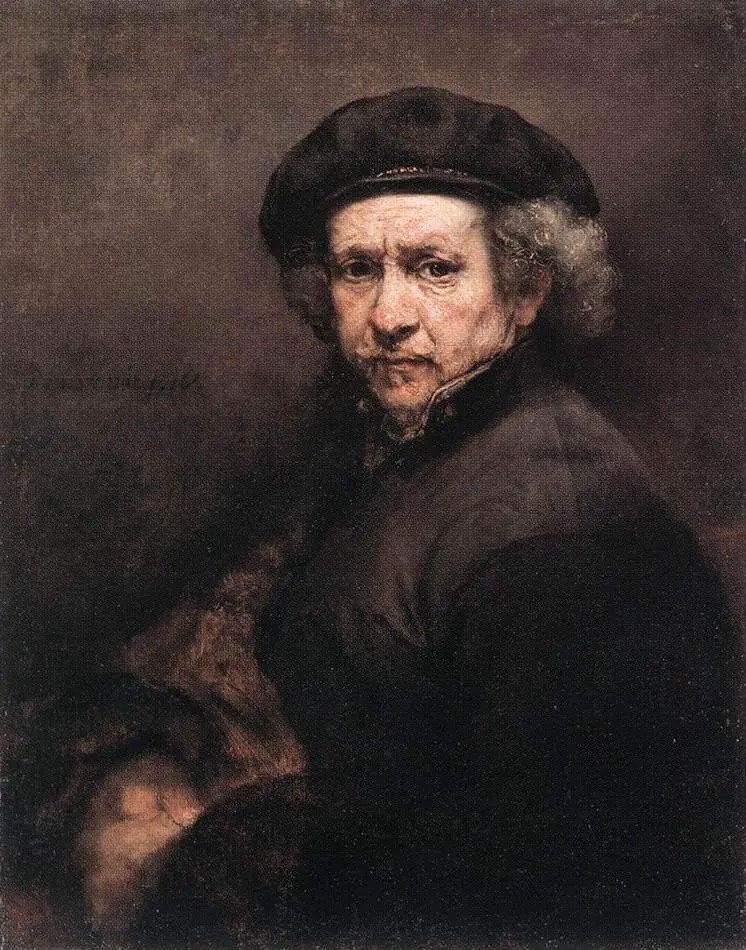
“A Sheet of Studies,” which showcases different faces with varying expressions, testifies to his profound understanding of human emotions and remarkable skill at conveying them.
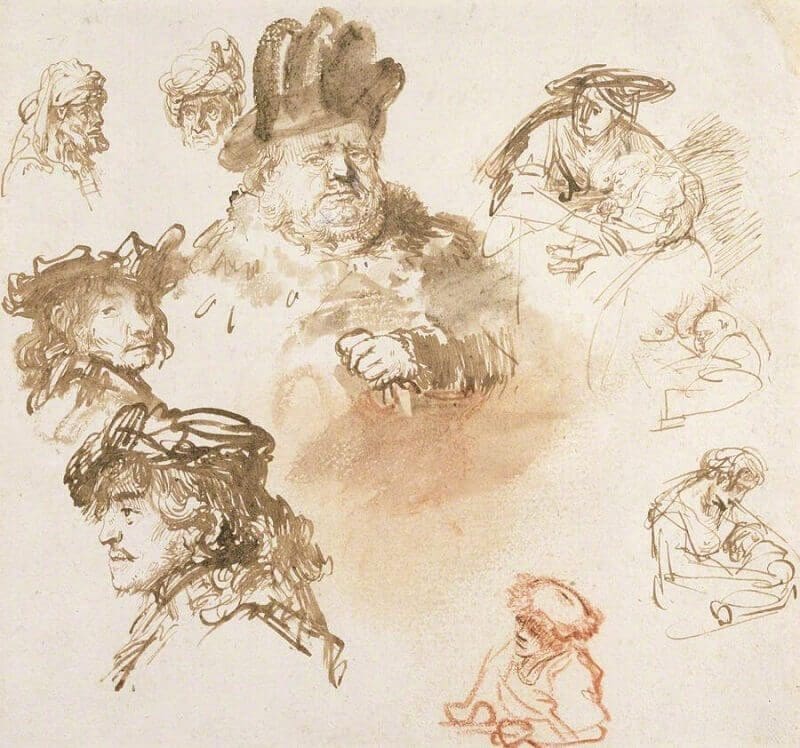
5. Peter Paul Rubens (1577 – 1640)
Rubens, a prominent Flemish Baroque artist, is best known for his sensual and vibrant painting style.
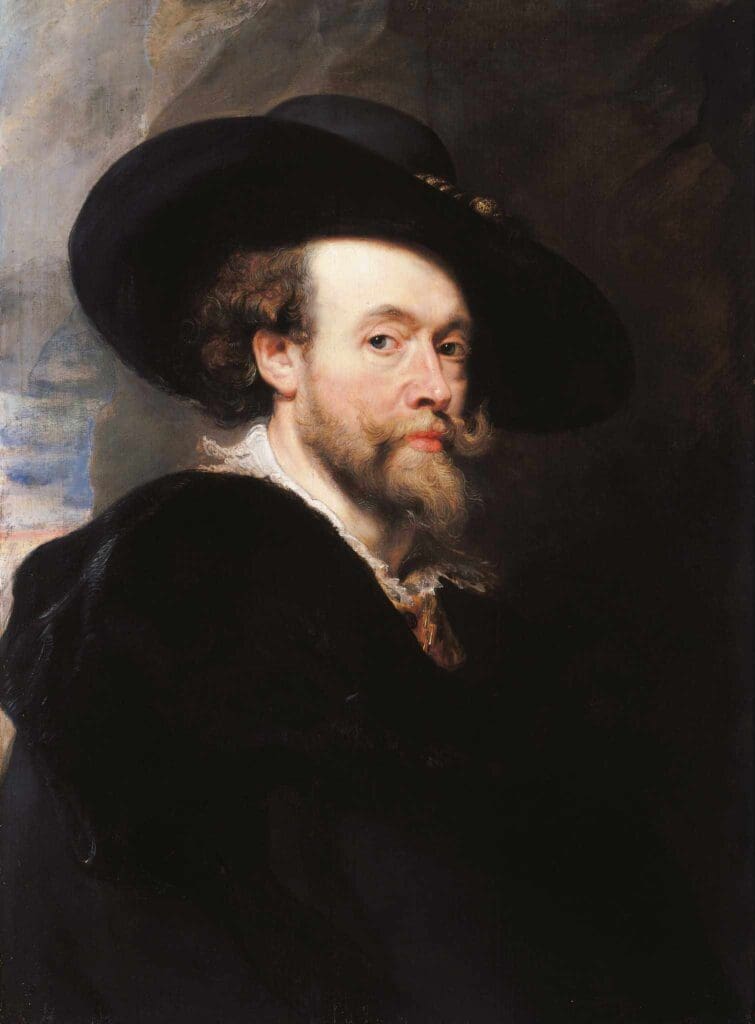
His sketches, like “Study of Two Women,” show his commitment to understanding human anatomy and his ability to infuse life into his drawings.
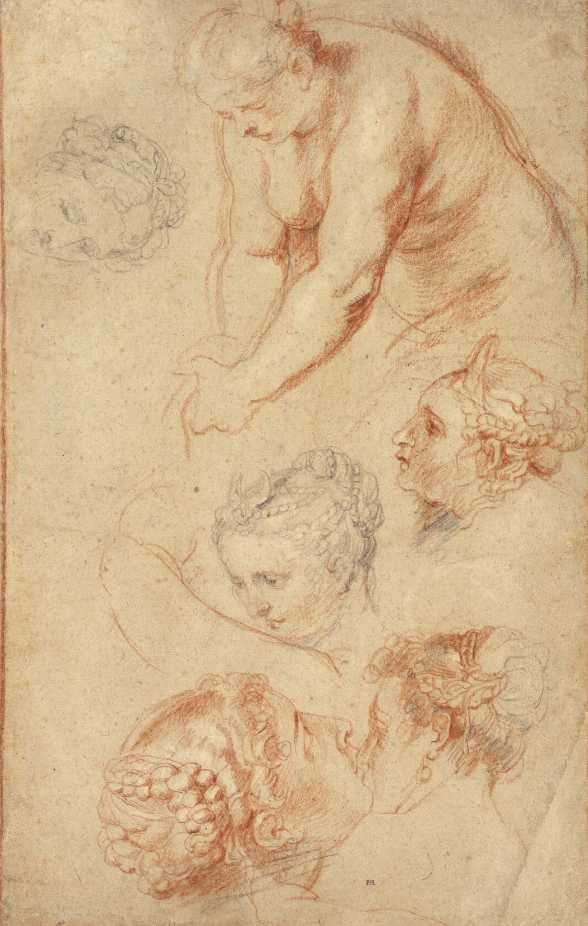
6. Jean-Auguste-Dominique Ingres (1780 – 1867)
Ingres, a French Neoclassical painter, was known for his precision and obsession with lines in his sketch.

“Study for The Odalisque” underlines his meticulous approach to drawing, which formed the groundwork for his polished paintings.
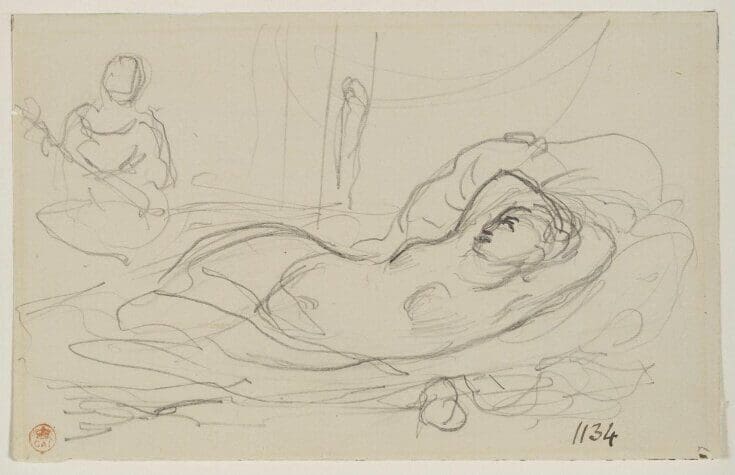
7. Edgar Degas (1834 – 1917)
Degas was a French artist renowned for his paintings, sculptures, prints, and drawings.
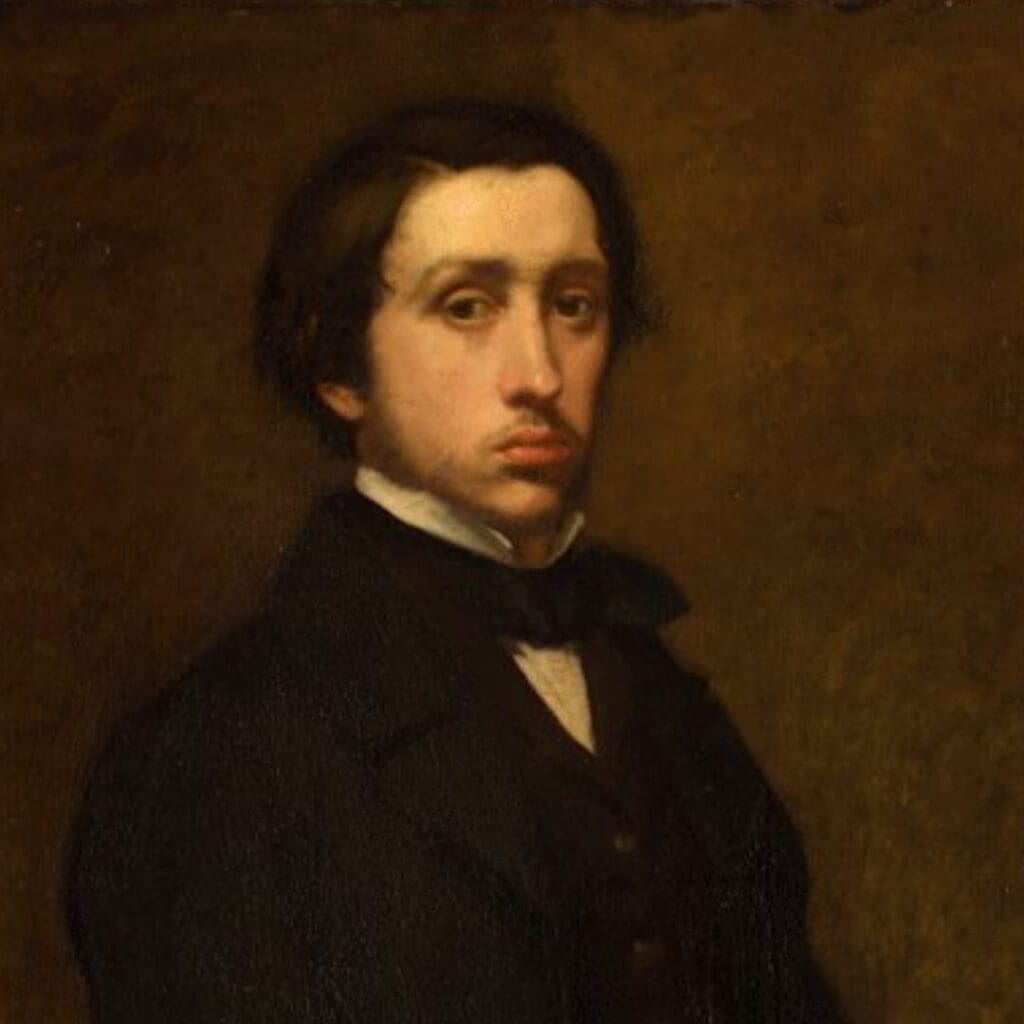
Known for his fascination with movement, his sketch, “Dancer Adjusting Her Slipper,” captures a fleeting, intimate moment in the life of a dancer, demonstrating his mastery over the human form and movement.

8. Vincent Van Gogh (1853 – 1890)
The Dutch post-impressionist painter Van Gogh is famed for his bold, emotional art.
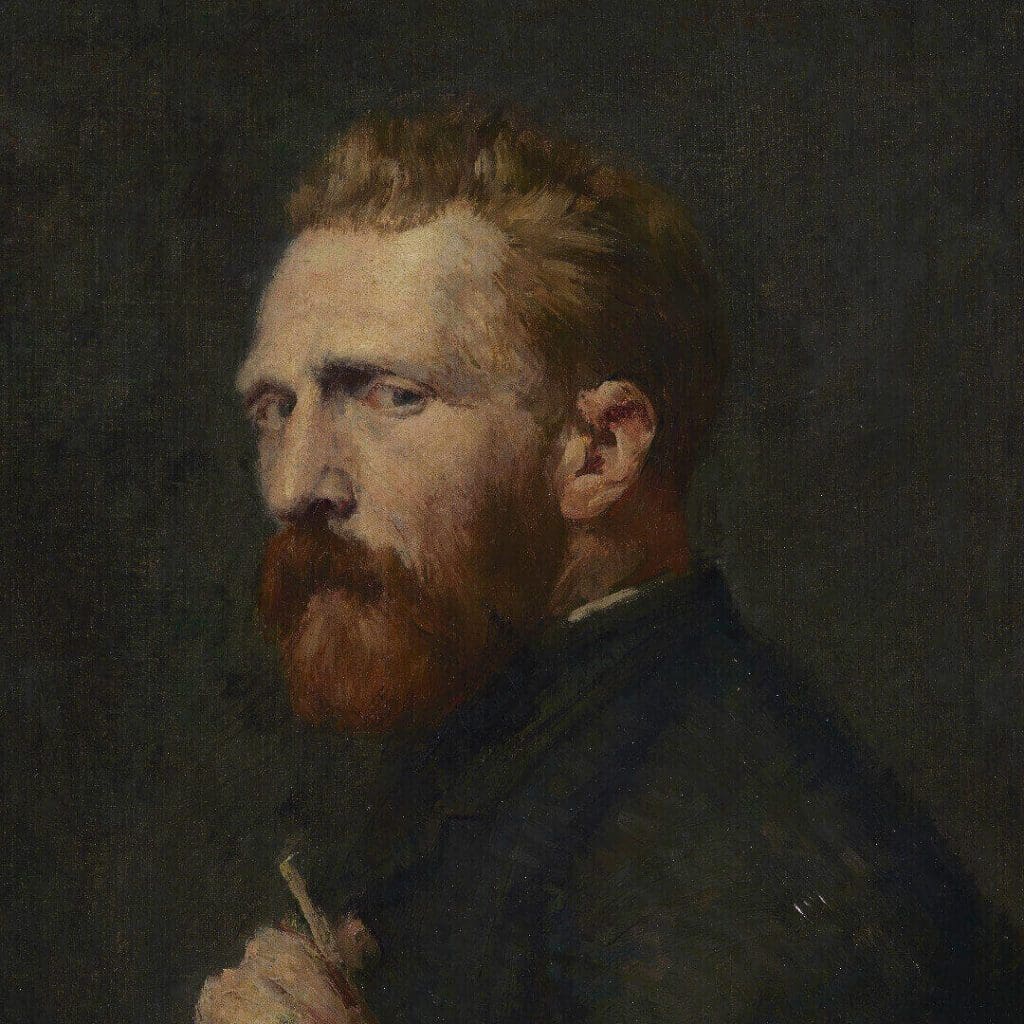
His sketch “Sorrow,” depicting a pregnant woman in despair, is a testament to his ability to use simple lines to convey profound emotion.

9. Gustav Klimt (1862 – 1918)
An Austrian symbolist painter, Klimt is best known for his sensual and decorative style.

His sketch “Study for Medicine,” although a preliminary work, illustrates his extraordinary attention to human form detail, a vital trait in his grand paintings.
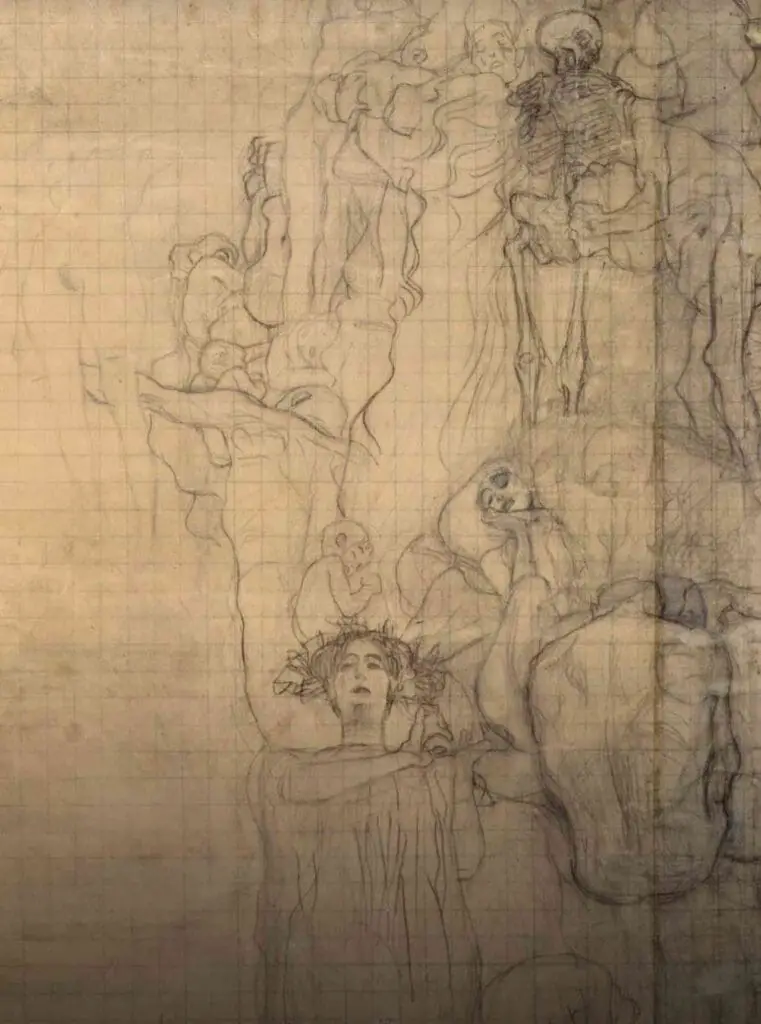
10. Henri De Toulouse-Lautrec (1864 – 1901)
The French painter Toulouse-Lautrec was a master of depicting the vivid life of late 19th-century Paris.
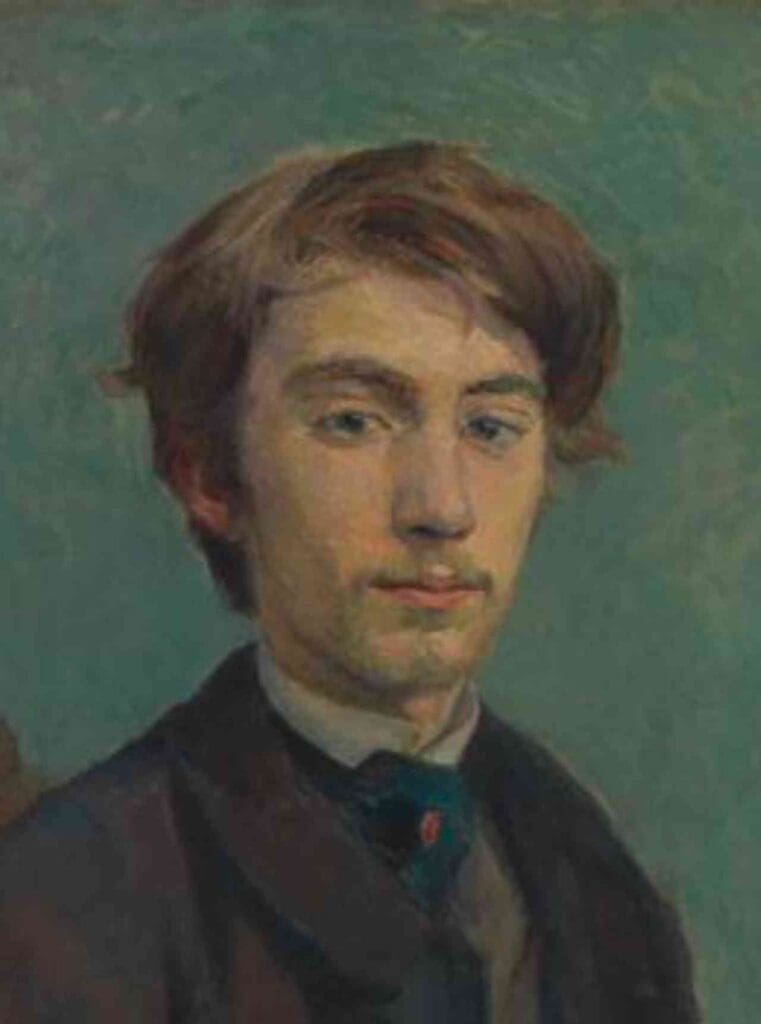
His sketch, “At the Moulin Rouge: The Dance,” encapsulates the dynamic energy of the dance hall, capturing movement and atmosphere with great finesse.
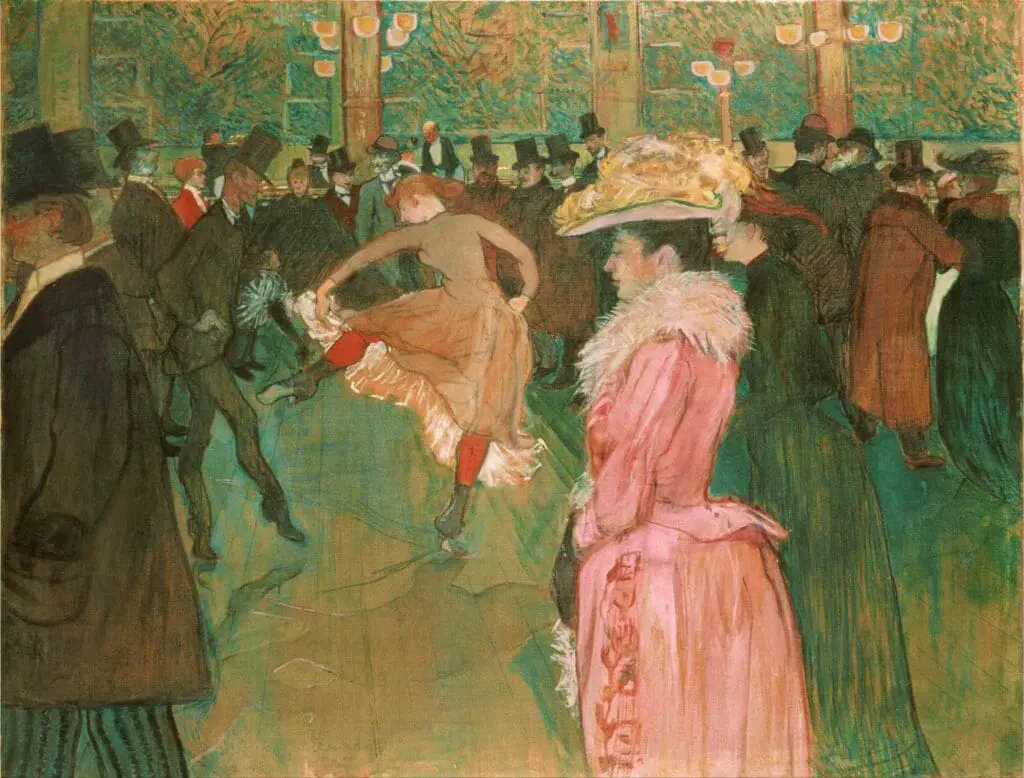
11. Pablo Picasso (1881 – 1973)
Picasso, one of the most influential artists of the 20th century, was known for his ability to work in multiple styles and mediums.
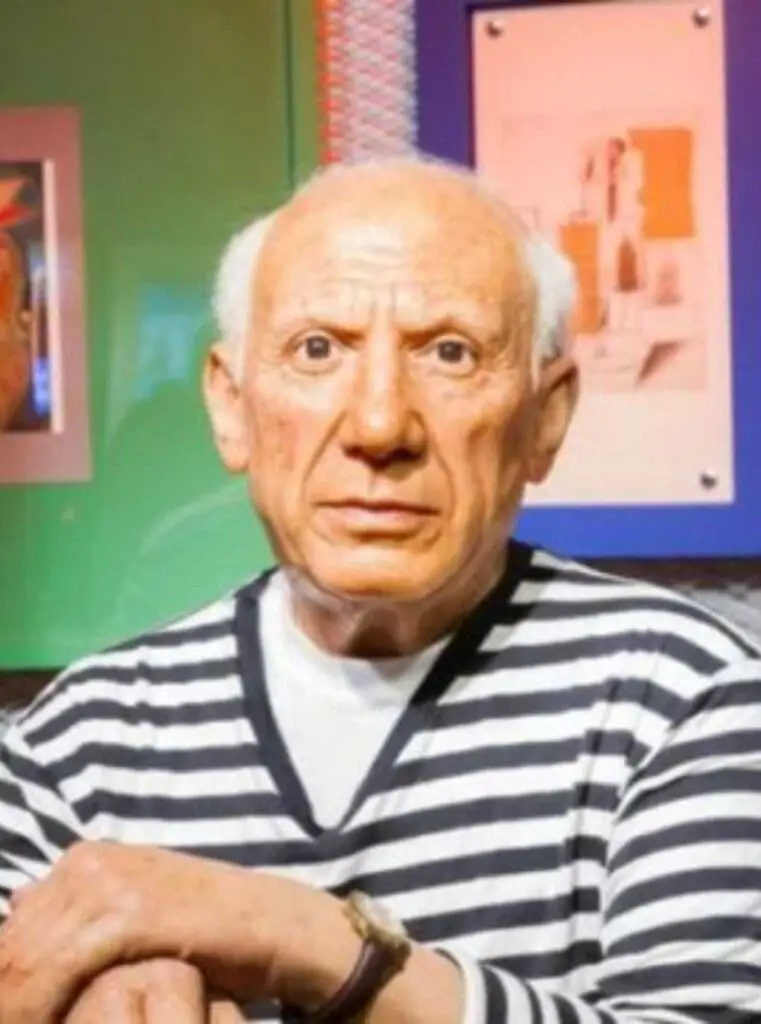
His sketch “The Bull,” a series of eleven lithographs, demonstrates his ability to break down complex forms into their simplest shapes, serving as a precursor to his Cubist style.
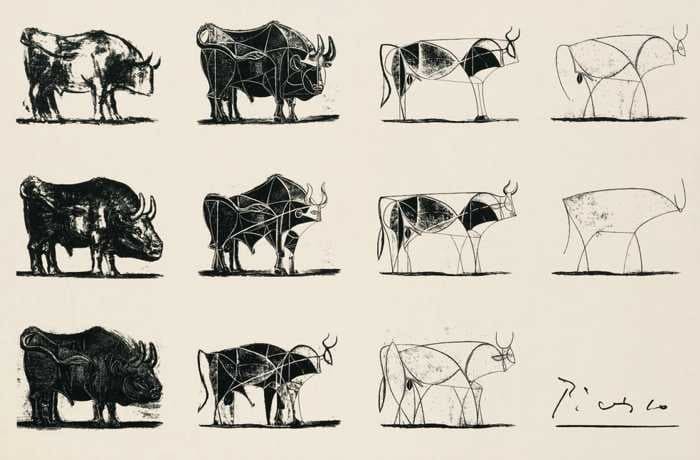
12. Norman Rockwell (1894 – 1978)
Rockwell, an American painter, and illustrator, was renowned for his warm, humorous, and often idyllic portrayals of American life.

His sketch “Triple Self-Portrait” displays his masterful storytelling ability and a keen eye for detail.
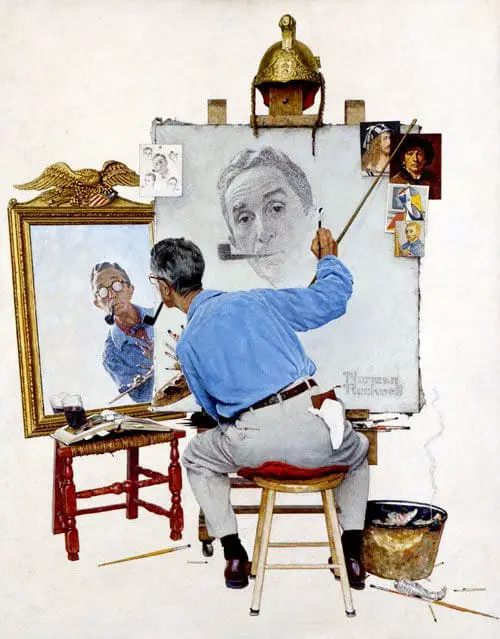
Why Sketching Is Essential For All Artists
Sketching, as evidenced by these masters, is an essential artistic skill. It is the first step in translating the world onto a canvas, allowing the artist to study their subject in depth, experiment with composition, and understand light and shadow.
Aspiring artists can learn a lot by studying these masters, observing how they used sketches to capture their vision, lay the groundwork for their compositions, and create remarkable works of art.
The vitality of a sketch lies in its immediacy and capability to distill a concept, an emotion, or an object to its essence. It is a direct reflection of the artist’s thoughts, unhindered by the conventions of formal art.
By mastering sketching, artists can explore and express their unique perspectives, giving rise to works of art that resonate with the viewer’s core.
Sketching is a fundamental skill that artists must master to cultivate their artistry. The twelve artists we’ve explored have demonstrated exceptional sketching skills and have used this art form to break down complex subjects, express emotions, and tell compelling stories.
Their sketches testify to the influence of sketching in creating a masterpiece and the freedom it offers to explore and experiment. By observing and studying their sketches, aspiring artists can gain invaluable insights into the art of sketching and drawing.
This exploration will undoubtedly fuel inspiration, paving the way for the next generation of artists to carve their paths in the vast realm of art.
Watch Our Short Stories About 12 Art Masters Who Can Sketch And Draw Below!
Anita Louise Art is dedicated to art education, great artists, and inspiring others to find and create their art. We love art that uplifts and inspires. #ArtToMakeYouSmile! #ArtToMakeYouHappy!
If you are interested to see any of my art, you can find out more by clicking here. If you are interested in what inspires me and my paintings, you can discover more by clicking here.
We have a free newsletter and would love you to be part of our community; you can subscribe to the newsletter by clicking here. If you have any questions, I would be happy to talk to you anytime. You can reach me, Anita, by clicking here.
Subscribe to our Anita Louise Art YouTube Channel with great videos and information by clicking here.
Join us for our podcast “5 Minutes With Art.” Spend just 5 minutes a week with us to discover and learn about great art and artists. You can find out more about our podcast by clicking here.
Frequently Asked Questions
What is sketching?
Sketching is the process of raw creation, where artists use lines and shades to give form and structure to their thoughts and visions on a canvas.
How does sketching differ from other forms of art?
Sketching is a preliminary form of art that serves as a foundation for more detailed and refined artworks. It focuses on capturing the essence of a subject rather than intricate details.
Why is sketching important for artists?
Sketching allows artists to study and understand their subjects in a more intimate way. It helps them analyze and dissect their subjects, laying the groundwork for more complex and polished artworks.
What materials are commonly used for sketching?
Artists use various materials for sketching, including pencils, charcoal, graphite sticks, pen and ink, and markers. The choice of material depends on the artist’s preference and the desired effect.
Can anyone learn to sketch?
Yes, anyone can learn to sketch. While some people may have a natural inclination towards art, practice and dedication are the key factors in developing sketching skills.
How can I improve my sketching skills?
Regular practice, observation of the world around you, studying the works of other artists, and experimenting with different techniques and materials can all help improve sketching skills.
What are the benefits of sketching?
Sketching has several benefits, including improved hand-eye coordination, enhanced observational skills, increased creativity, and the ability to communicate ideas visually.
Is sketching limited to certain subjects?
No, sketching can be applied to any subject. Artists can sketch landscapes, still life, portraits, animals, and various other subjects based on their interests and artistic goals.
Can sketching be considered a complete artwork on its own?
While sketching can stand as an independent artwork, it is often seen as a preliminary stage in the artistic process. Sketches are often used as references for more detailed and refined artworks.
Related Questions
What Was The Focus Of Renaissance Art?
The focus of Renaissance art was on the classics of Greek and Rome, humanist philosophy, and the study of the human figure. Realism was also an essential part of renaissance art. The great artists of the Renaissance also became great anatomists and studied human beings.
By clicking here, you can learn more by reading What Was The Focus Of Renaissance Art?.
What Is The Importance Of Art From The Renaissance Period?
Renaissance art is essential as it was a time of rebirth and discovery. Artists like Leonardo da Vinci, Michelangelo, and Raphael were at the forefront of that change, creation, and discovery. Renaissance art has influenced art and artists for many centuries and continues to influence artists today.
By clicking here, you can learn more by reading What Is The Importance Of Art From The Renaissance Period?.
21 Top Renaissance Artists And Their Works Of Art
When we speak of top Renaissance artists, we think of the trinity of artists like Leonardo da Vinci, Michelangelo, and Raphael. But besides these three artists, many other influential Renaissance artists remain essential.
By clicking here, you can learn more by reading 21 Top Renaissance Artists And Their Works of Art.
Greek And Rome’s Influence On Renaissance Art
The Renaissance, as a period of rebirth, was greatly influenced by the classical ancient art of Greek and Rome. During this period, many of these works of art were also rediscovered, which led to the discovery of realism, symmetry, and harmony in the arts. Greek and Roman art also influenced the subject matter of many of Renaissance artists.
By clicking here, you can learn more by reading Greek And Rome’s Influence On Renaissance Art.
Why Was The Human Figure So Important To Renaissance Art?
The human figure was significant to the Renaissance artists; they showed the realistic human form. They understood that to show the human form adequately, they needed to study it and understand it better. The classical statues of Greek and Rome greatly influenced these Renaissance artists and their desire to depict the perfect human form. It can be said that Renaissance artist started their study of the human figure where the Greek and Roman artists left off.
By clicking here, you can learn more by reading Why Was The Human Figure So Important To Renaissance Art?.
50 + Quotes From Renaissance Artists
The renaissance was a modern time for art during the 14th, 15th, and 16th Centuries. It is also the period in European history that marked the transition from the dark Middle Ages to the modern era known as the renaissance period. We are great fans of the renaissance and many renaissance artists. So we have created for you 50+ of some of our favorite renaissance era artist quotes.
By clicking here, you can learn more by reading 50 + Quotes From Renaissance Artists.

